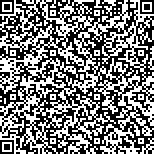| 引用本文: | 刘朝相,宫兆宁,赵文吉,高明亮,崔天翔,刘辉.基于光谱基线校正的季节性浑浊II类水体叶绿素a浓度遥感反演.湖泊科学,2014,26(6):897-906. DOI:10.18307/2014.0612 |
| LIU Chaoxiang,GONG Zhaoning,ZHAO Wenji,GAO Mingliang,CUI Tianxiang,LIU Hui.Remote sensing retrieval for chlorophyll-a concentration in seasonal turbid case II water based on baseline correction of spectra. J. Lake Sci.2014,26(6):897-906. DOI:10.18307/2014.0612 |
|
| |
|
|
| 本文已被:浏览 9383次 下载 4794次 |

码上扫一扫! |
|
|
| 基于光谱基线校正的季节性浑浊II类水体叶绿素a浓度遥感反演 |
|
刘朝相1,2,3,4, 宫兆宁1,2,3,4, 赵文吉1,2,3,4, 高明亮1,2,3,4, 崔天翔1,2,3,4, 刘辉1,2,3,4
|
|
1.首都师范大学资源环境与旅游学院, 北京 100048;2.三维信息获取与应用教育部重点实验室, 北京 100048;3.资源环境与地理信息系统北京市重点实验室, 北京 100048;4.北京市城市环境过程与数字模拟国家重点实验室培育基地, 北京 100048
|
|
| 摘要: |
| 水体Chl.a浓度是水质评价的一个重要指标,受悬浮物浓度季节性变化的影响,如何削弱悬浮物的光谱干扰,是实现内陆水体Chl.a浓度遥感高精度反演的难点之一. 基于2011-2013年妫水河6次实测水体高光谱数据和水体Chl.a浓度数据,评价广泛应用的三波段模型和非线性拟合能力较好的支持向量机回归(SVR)模型的反演精度,使用基线校正和一阶微分方法来削弱实测高光谱中非Chl.a光谱信息. 定义两种基线:750nm的反射率值;500与750nm的反射率值连线,基线校正为光谱反射率减去基线值. 利用2013年7月的实测数据进行验证,结果表明,SVR模型比三波段模型更适合季节性浑浊水体的Chl.a浓度反演. 通过基线校正筛选后的波段反射率组合作为输入变量能够提高SVR模型的反演精度,决定系数为0.68,均方根误差为3.38μg/L;线性基线校正提高三波段Chl.a估算模型的反演能力有限. |
| 关键词: 水体Chl.a浓度 季节性浑浊II类水体 基线校正 三波段模型 支持向量机 妫水河 |
| DOI:10.18307/2014.0612 |
| 分类号: |
| 基金项目:国家高技术研究发展计划"863"项目(2012AA12A308)、国家青年科学基金项目(41101404)、国家基础测绘项目(2011A2001)和北京市教委科技计划面上项目(KM201110028013)联合资助 |
|
| Remote sensing retrieval for chlorophyll-a concentration in seasonal turbid case II water based on baseline correction of spectra |
|
LIU Chaoxiang1,2,3,4, GONG Zhaoning1,2,3,4, ZHAO Wenji1,2,3,4, GAO Mingliang1,2,3,4, CUI Tianxiang1,2,3,4, LIU Hui1,2,3,4
|
|
1.College of Resource Environment and Tourism, Capital Normal University, Beijing 100048, P.R.China;2.Key Laboratory of 3D Information Acquisition and Application of Ministry of Education, Beijing 100048, P.R.China;3.Key Laboratory of Resources Environment and GIS of Beijing Municipal, Beijing 100048, P.R.China;4.Base of the State Laboratory of Urban Environmental Processes and Digital Modeling, Beijing 100048, P.R.China
|
| Abstract: |
| Chlorophyll-a(Chl.a) concentration is an important indicator of water quality evaluation, which is affected by the seasonal changes of suspended matter concentration. How to weaken the spectral interferences of suspended matter is an important issue in the retrieval of Chl.a concentrations with remote sensing in inland water. Based on six field surveys in 2011-2013 in Guishui River, the inversion ability of Chl.a concentrations with three-band model and support vector regression model were evaluated, in which baseline correction and first order differential method were used to weaken the spectral noises. Reflectance of 750 nm was defined as a baseline, a connecting line of reflectance from 500 nm to 750 nm was defined as another baseline. Baseline correction was defined as spectral reflectance minus baseline values. The validation was performed using data of samples in July 2013, the results demonstrated that SVR model was better than the three-band model in reversion of the Chl.a concentration in seasonal turbid water. Band reflectance combinations after baseline correction screening as the input variables can improve the inversion accuracy of the SVR estimation model. The determination coefficient was 0.68 and the root mean square error was 3.38 μg/L. Linear baseline correction can slightly improve the inversion accuracy of the three-band model. |
| Key words: Water chlorophyll-a concentration seasonal turbid case II water baseline correction three-band model support vector machine Guishui River |
|
|
附件
|
|